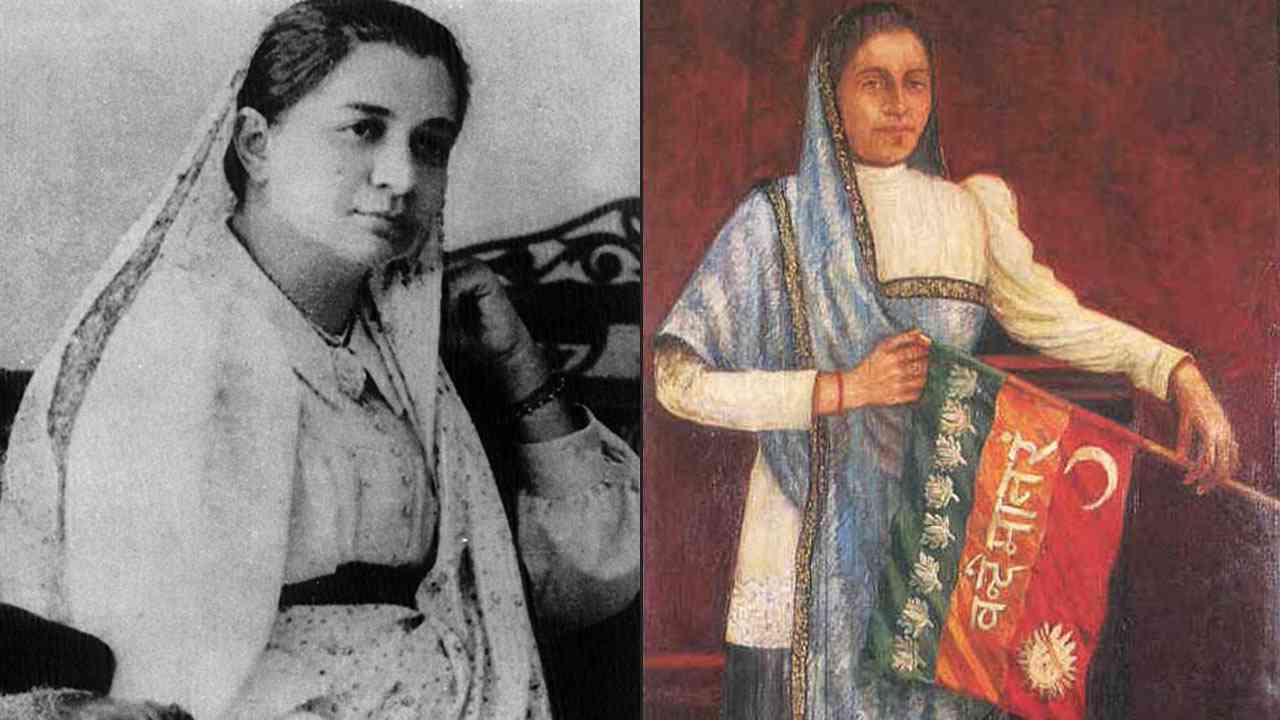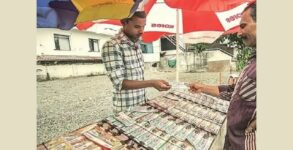Remembering Bhikaji Cama: The date was 22 August 1907, the independence of our country was still 40 years away. The whole world was not fully aware of the immense struggle young Indians were going through for attaining the country’s freedom. At a time like these, a frail Indian lady with indomitable fire in her heart and a strong sense of patriotism raised India’s first National flag at the International Socialist Conference in Stuttgart, Germany.
Bhikaiji Cama, the mother of the Indian revolution. Also known as Madame Cama, she was the first woman who successfully unfurled the first version of the tricolour Indian flag. She still remains to be one of the most prominent women personalities to participate in the Indian Nationalist Movement. Born on September 24, 1861, into a well-off Parsi family in Bombay (now Mumbai) Bhikaji received her early education there. From her childhood, she was drawn towards political issues and had a keen interest in the Indian Nationalist movement.
In 1885, at the age of 24, she tied the knot with Rustomji Cama, a well-known Pro-British lawyer. Soon after their marriage, problems began to mount in their relationship due to ideological differences. She was never happy in her married life and sought pleasure in altruistic activities. Meanwhile, she was also suffering from poor health, which required medical attention. Bhikaji decided to move to London. She always kept herself updated about the freedom movement In India. She met Dadabhai Naoroji in London and with him, she began working for Indian National Congress. Cama also came in contact with other Indian nationalists, including Vir Savarkar, Lala Har Dayal, and Shyamji Krishnavarma, and addressed several meetings in London’s Hyde Park.
In 1907, she attended the International Socialist Conference in Stuttgart, where she asked every delegate to rise and salute the Indian flag in support of the country’s freedom. She started travelling to many countries in Europe to mobilise public support and opinion against British rule in India. She met many expatriate Indians in France and Holland and gathered their support. With Har Dayal, she launched a revolutionary paper called Bande Mataram, copies of which were smuggled into India during the first world war. When France and England became allies the British asked for her extradition, but the French Government refused to cooperate. The British had banned her entry in India being afraid of her revolutionary past and confirmed nationalistic outlook.
On August 22, 1907. Bhikaji hoisted the Indian flag in Stuttgart in Germany. becoming the first Indian to do so on foreign soil, and appealed for human rights, equality and freedom from British rule. The flag, which she co-designed with Shyamji Krishna Varma, later served as one of the templates for our current national flag. Its top green stripe had eight blooming lotuses, Bande Mataram was written across the central saffron stripe in Hindi and on the bottom red stripe, a half moon was on the right and the rising sun on the left.
Bhikaji remained in Europe till 1935, when she was left paralysed by a stroke and petitioned the British government to be allowed to return to India. She was granted the person and returned to Bombay in November 1935. She died nine months later on August 13 1936.
Bhikaji bequeathed most of her personal assets to the Avabai Petit Orphanage for girls, which established a trust in her name. Multiple cities in India have streets or locations named after her, the Bhikaji Cama Place in New Delhi being one of the most famous and notable ones. The Indian Posts and Telegraphs Department issued a commemorative stamp in her honour on January 26, 1962.
While we celebrate famous freedom fighters this Independence day, let us also remember leaders such as Bhikaji Cama for their notable contributions in the freedom struggle.

















